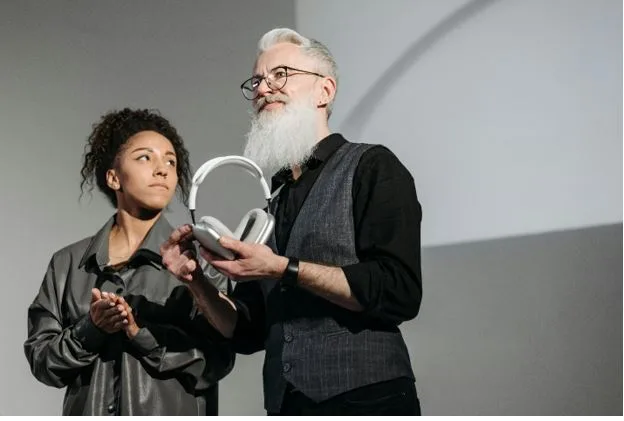From Concept to Consumer: How Manufacturing Innovations Transform Industries
Every product you see on a store shelf started as an idea. Before it was packaged, priced, and placed in front of you, it went through a journey, one that combined creativity, problem-solving, and manufacturing know-how. In today’s world, that journey has been transformed by technological advances, better processes, and forward-thinking strategies.
Manufacturing is no longer just about building things faster. It’s about creating better solutions, reducing waste, improving quality, and meeting consumer needs more precisely than ever before. Entire industries have been reshaped by innovations that allow businesses to turn ideas into market-ready products more efficiently and sustainably.
But behind every successful innovation, there’s leadership guiding the process. Machines can produce at scale, but they can’t set the vision or decide the direction. Leaders who understand both the technical and human sides of manufacturing are the ones who ensure great ideas actually make it to consumers.
Visionary Leadership at the Core of Innovation
Innovation doesn’t happen in a vacuum. It requires leaders who can see the potential in a concept and map out the steps to bring it to life. In manufacturing, that means having the foresight to invest in new technologies, the discipline to maintain high standards, and the flexibility to adapt when challenges arise.
Business leaders like Frank VanderSloot have shown how combining strategic thinking with a commitment to quality can turn ambitious concepts into products that stand out in the marketplace. His approach to building efficient operations, maintaining tight quality control, and staying deeply involved in the decision-making process reflects the traits needed to lead manufacturing innovation. By creating vertically integrated systems and fostering a culture where excellence is non-negotiable, leaders like him demonstrate how vision translates into tangible results for consumers.
Strong leadership ensures that innovation isn’t just about new ideas. It’s about building the infrastructure, processes, and teams necessary to make those ideas a reality.
From Idea to Prototype: The First Leap
Every successful product starts with a design phase, where concepts are tested and refined. This stage is where creativity meets practicality. Teams work to figure out whether an idea can be built in a way that’s efficient, affordable, and appealing to consumers.
Rapid prototyping has become a game-changer in this phase. With tools like 3D printing and computer-aided design, manufacturers can create and test models faster than ever before. It allows for more experimentation and adjustments without wasting time or resources. The faster you can test and improve a design, the quicker you can determine if it’s worth moving to full-scale production.
For businesses, this step is about balancing innovation with feasibility. It’s exciting to dream big, but prototypes help ensure the concept will actually work in the real world.
Scaling Up: The Manufacturing Challenge
Once a prototype is finalized, the next hurdle is scaling it for production. That’s where manufacturing expertise is critical. Producing a handful of prototypes is one thing; making thousands or millions of units is an entirely different challenge.
Automation plays a major role in this stage, with robotics and precision machinery ensuring consistency and speed. Quality control systems must be in place to make sure every product meets the same standards as the original prototype. Leaders must decide how to structure production so it’s cost-effective without compromising on quality.
Scaling up isn’t just about output. It’s about building a process that’s sustainable and adaptable for future growth. This step can make or break a product’s success.
Supply Chain Innovation
Getting a product made is only half the battle. You also have to get it to the consumer efficiently. Supply chain innovation has become essential for modern manufacturing. Real-time tracking, predictive analytics, and streamlined logistics systems make it possible to move products quickly and cost-effectively.
Leaders are also focusing on supply chain transparency. Consumers increasingly want to know where their products come from and how they’re made. Providing clear, accurate information about sourcing not only builds trust but also strengthens a brand’s reputation.
A well-managed supply chain doesn’t just reduce delays. It ensures that the product arrives in perfect condition, ready to meet consumer expectations.
Quality Assurance and Consumer Trust
No matter how innovative a product is, it won’t succeed without consistent quality. That’s why modern manufacturing places such a strong emphasis on quality assurance. Technologies like AI-powered inspections and digital monitoring help detect issues early, preventing defective products from reaching the market.
When consumers know they can trust the quality of a product, they’re more likely to become repeat customers. Quality assurance isn’t just about meeting technical standards. It’s about delivering on a promise. In a competitive marketplace, trust can be the deciding factor in whether a product thrives or fails.
Sustainability in Modern Manufacturing
Sustainability has moved from a trend to a necessity in manufacturing. Companies are under pressure to reduce waste, conserve resources, and minimize their environmental impact. Forward-thinking manufacturers are responding by using eco-friendly materials, improving energy efficiency, and designing products for longevity and recyclability.
Sustainable practices also create business advantages. Reducing waste often lowers costs, while energy-efficient systems can save money over time. Additionally, consumers are more likely to support companies that demonstrate environmental responsibility.
By integrating sustainability into manufacturing innovation, businesses are not only helping the planet but also strengthening their competitive edge.
The Ongoing Role of Innovation
Innovation isn’t a one-time achievement. It’s an ongoing process. Products must evolve to meet changing consumer needs, adapt to new technologies, and stay ahead of competitors. That means leaders need to maintain a forward-looking mindset, always scanning for opportunities to improve and adapt.
This continual improvement ensures that manufacturing remains relevant and competitive, no matter how markets shift. Whether it’s updating a product design, adopting a new technology, or refining a process, staying innovative is essential for long-term success.
The journey from concept to consumer is complex, but manufacturing innovations make it possible to bridge that gap faster and more effectively than ever before. Strong leadership, advanced technology, efficient supply chains, and a commitment to quality all play vital roles in turning ideas into reality.
Leaders demonstrate that innovation works best when it’s guided by vision, grounded in quality, and supported by a well-structured process. By blending creativity with discipline, manufacturers can deliver products that not only succeed in the marketplace but also set new standards for their industries.
As manufacturing continues to evolve, the combination of innovation and leadership will remain the driving force behind products that shape how we live, work, and connect with the world.





